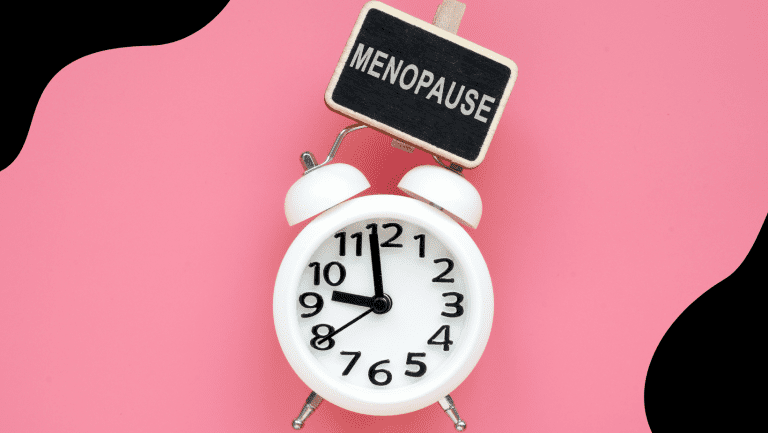The benefits of red light therapy for back pain-how it works
Two months ago, I found myself in a frustrating and painful situation. I had injured my back, and to make matters worse, I started experiencing nerve pain that radiated down my arms every time I bent over.
It was uncomfortable, and even the simplest tasks became a struggle. It was then that my close female friend told me about red light therapy.
My Personal Experience with red light therapy for my back
When I first heard about red light therapy, I have to admit I was skeptical. I mean, how could shining some red light on my back relieve my pain? But let me tell you, when you’re dealing with constant pain and limited mobility, you become willing to try just about anything.
So, I embarked on a research journey into the world of red-light therapy. I dove headfirst into a rabbit hole of information, hungry to learn everything I could. I devoured reputable podcasts, looked into scientific studies on how this mysterious therapy works.
The affiliate links below take you directly to the products I use.
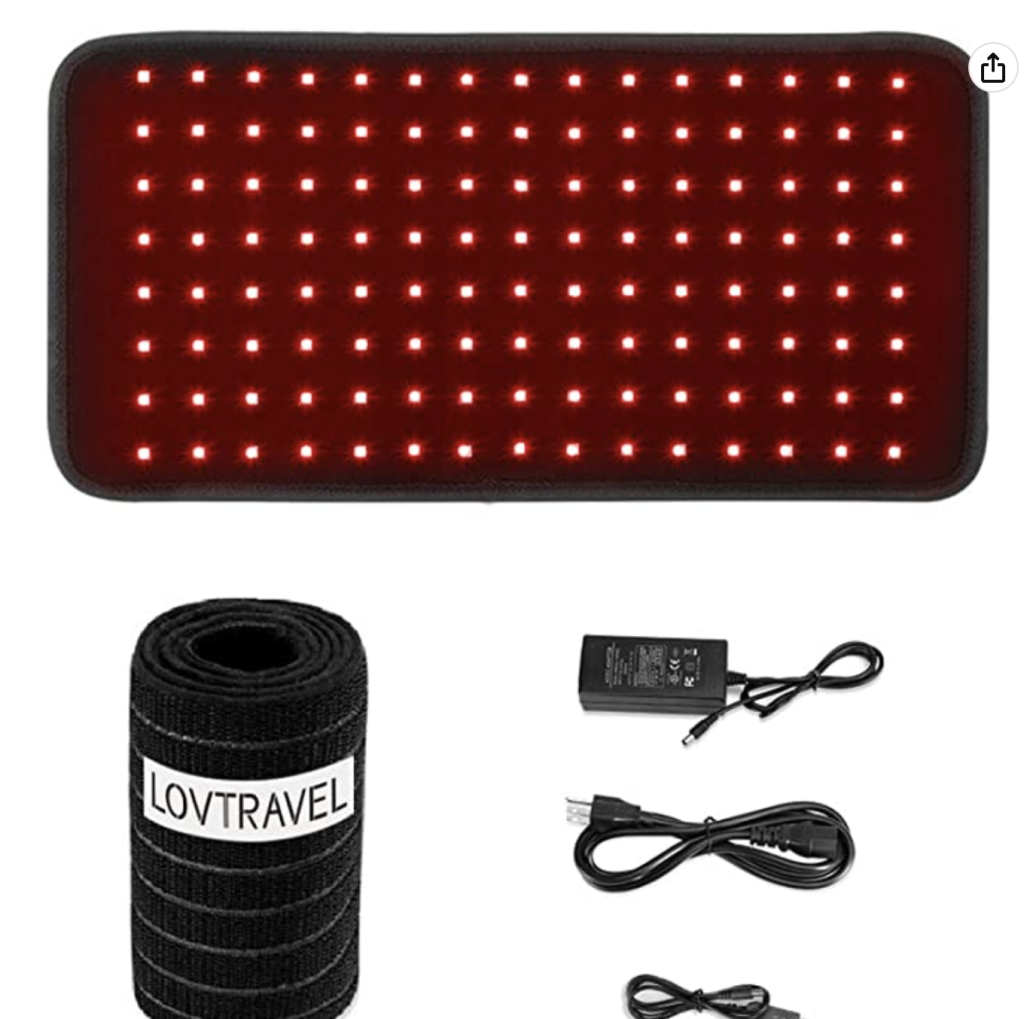
Red light therapy Belt-Wrap
medical red and deep penetrating infrared lights, penetrate deeply in the tissues. The infrared light therapy system is wearable and consists of a 15.7″ x 9″ x 0.5″ flexible pad embedded with an alternating array of 120 red light (660 nm ) and 240 invisible infrared lights(850 nm)
What I discovered blew my mind. Red light therapy is no joke! It stimulates cellular activity and promotes healing from within. The red and near-infrared light can penetrate deep into your tissues, reaching those stubborn affected areas and kick-starting a series of beneficial reactions within your cells. It’s like giving your cells a superhero power-up!
I recently started using red light on my face to help fight anti-aging. Yes, it helps with that too!
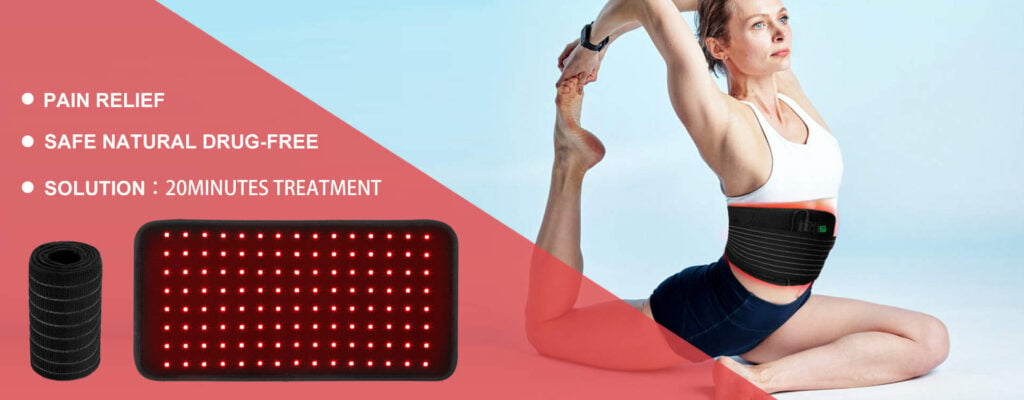
My Inexpensive Red Light Wrap
With newfound excitement, I hopped online and ordered myself a red-light wrap.Buying a high-quality redlight is key. Novalab is one I recommend. I used it every day, basking in the glow of those magical red lights. And you know what? It worked! I felt the pain easing, my mobility improving, and my hope soaring.
So, if you’re feeling skeptical like I was, take a leap of faith. Give red light therapy a try and let those mighty red lights work their healing magic. It might surprise you.
So, if you’re ready to explore a natural and effective approach to tackle your back pain and reclaim your freedom, let’s embark on this exciting journey together. Get ready to say goodbye to that nagging pain and embrace a life of comfort and vitality!

Chronic Back Pain
Living with chronic low back pain can be challenging and draining. It’s not uncommon for individuals to feel trapped in a cycle of discomfort and frustration, searching for relief. However, there is hope.
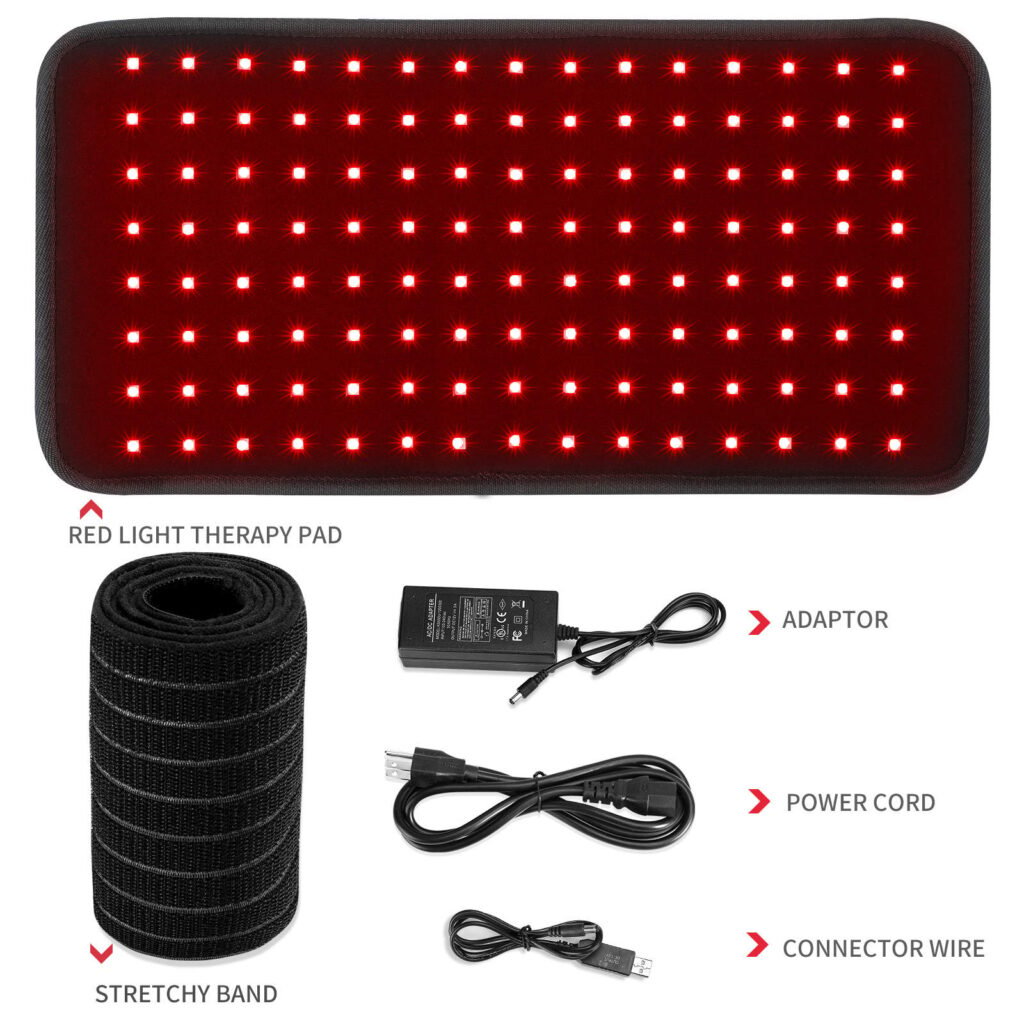
“One of the primary benefits of red light therapy is to treat chronic (ongoing) inflammation, which eases pain in joints and muscles,” says Rachel A. Sugarman, DO, an integrative medicine specialist at Main Line Health Integrative and Functional Medicine. “What’s more, with whole-body red light therapy, you might even treat other sources of pain you weren’t focusing on.”
The prospect of trying a new type of therapy can ignite a spark of inspiration, offering the possibility of finally finding effective pain relief. Listening to tales of relief from others or finding out about original treatments like red light therapy, this newfound expectation can invigorate those with chronic low back pain. It’s worth it to give it a tryWhat Is Red Light Therapy?
Red light therapy is an effective solution that uses the power of red and near-infrared light to stimulate the body’s cells, offering a multitude of benefits.
Visible light penetrates biological tissues, such as cells, muscle tissues and nerve tissues—with red and near-infrared (NIR) light going deeper than green, blue or violet light.
“With red light therapy, you expose an area of your body to a specific wavelength of red light emitted by a device that can range in size from handheld to whole-body,” says Casey Kelley, M.D., founder and medical director of Case Integrative Health. “Essentially, the red light stimulates your cells to work at a higher level.”
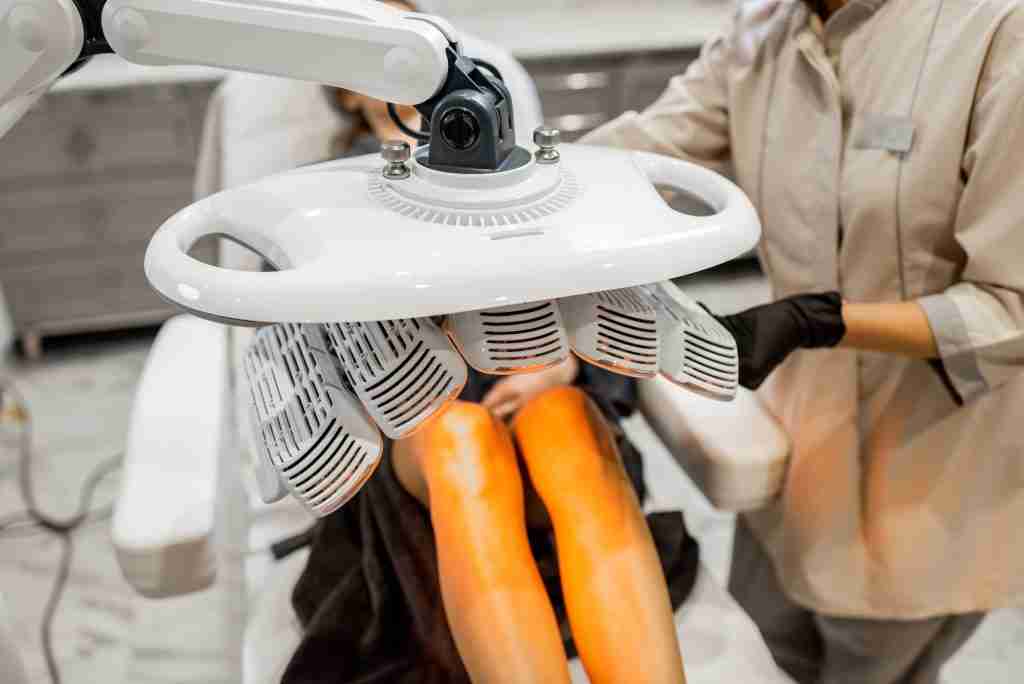
Red Light Therapy Works At A Cellular Level
Red Light therapy is an incredible technique that uses special light photons in the body’s mitochondria a power boost through something called Cytochrome C Oxidase. This amazing process helps cells breathe better and improves their ability to transfer electrons.
As a result, your body can produce more ATP, which is like a super fuel for cells, leading to an overall improvement in my cellular function. It’s truly fascinating how this therapy can enhance my well-being at a deep, cellular level!
This innovative therapy has shown remarkable results in addressing common concerns like fine lines, hair loss, and various skin-related issues. By harnessing the rejuvenating properties of red light, it promotes cellular function, leading to healing and revitalization.
A Natural Transformative Approach
By incorporating red light therapy into a comprehensive treatment plan, individuals can experience a natural and transformative approach to enhancing their overall well-being and achieving a healthier, more radiant appearance. This includes softening fine lines, thickening hair and many other skin-realHow Does Red Light Therapy Reduce Pain?
So, what does red light therapy do? Well, it’s a fascinating technique that harnesses the power of red and near-infrared light to work its magic on your body.
By using a process called photobiomodulation, it stimulates cell regeneration, boosts cell function, and even gets your blood flowing. The amazing thing is that all of this can lead to healing and a reduction in pain. It’s like giving your body a helping hand in its natural healing processes.
Red light therapy involves exposing your skin to a red light emitted by a lamp, device, or laser. Within your cells, there are tiny powerhouses called mitochondria, and they absorb this red light, using it to generate more energy. The increase in cellular energy is believed to play a vital role in cellular repair and overall cell health. As a result, it stimulates the healing process, benefiting both skin and muscle tissues.
Treating Chronic Pain with Light Therapy
Red Light Therapy (RLT) that has the remarkable ability to aid in the healing of your body’s tissues, skin, and different parts of the body. This therapy involves exposing the affected areas to low levels of near-infrared light. Although we can’t see this type of light with our eyes, our bodies can feel its gentle warmth. Red Light Therapy is also known by other names such as low-level laser therapy, low-power laser therapy, or photobiomodulation.
Interestingly, the deeper the penetration of the light, such as infrared (IR) light, and the more focused the light source, like a laser, the greater the energy and blood flow generated. This results in more heat being produced in the body, which can promote focused healing in specific areas.
However, there are also less intense and more generalized light therapies available, such as light blankets, lamps, or saunas, which can be found in wellness or health centers, and some can even be purchased for personal use at home.
It’s incredible how the power of light can contribute to our well-being and help us heal.
Are Red Lights Hot?
One notable advantage of red-light therapy is that it utilizes low levels of heat, making it a gentle and safe treatment that does not cause any discomfort or skin burns. It’s crucial to note that red light therapy differs from the type of light used in tanning booths, and it does not subject your skin to harmful UV rays.
I’ve been fascinated by the ongoing research into the potential of red-light therapy to ease pain in various chronic conditions. According to Dr. Praveen Arany, a knowledgeable expert in the field, when you use the right dose and follow the proper protocol, red light can reduce both pain and inflammation.
What types of pain can RLT treat?
RLT is most used for wounds, including burns and scars, according to Tabitha Cranie, MD. She’s a family practice physician in St. Petersburg, Florida.
There is also evidence that RLT can be effective in treating other conditions. A study in the journal Laser Therapy found that athletes who had muscle injuries could return to their sport more quickly after using RLT.
The potential benefits of red-light therapy can heal the following:
- Achilles tendinitis
- Bone recovery pain (from a fracture)
- Diabetic foot ulcers and foot neuropathy
- Joint and neck pain
- Muscle pain
- Osteoarthritis
- Psoriasis
- Rheumatoid arthritis
- Wounds and burns
- Chronic neck pain
Red Light Therapy Reduces Inflammation
As we know, inflammation causes pain. Acute inflammation, such as a sprained ankle or a minor injury, often causes localized pain that subsides as the inflammation resolves. Chronic inflammation, which persists over a longer period, can lead to ongoing or recurring pain.
Red light therapy has shown promise in helping to reduce inflammation in the body. When red light applies to the affected area, it can penetrate the skin and reach the underlying tissues. This stimulates the mitochondria within the cells, promoting increased energy production and enhancing cellular function.
It’s remarkable. Scientific research shows that the red-light therapy available today heals the body. This includes wound healing, collagen production, neuropathic pain, and any inflammatory conditions and much more.
Sports Injury Recovery With Red Light Therapy
One beneficial aspect of red and infrared light therapy is its potential for relieving pain and promoting faster healing. It has shown great promise in treating various types of muscle pain and chronic joint pain. Many athletes have found immense value in using IR light therapy to speed up their recovery from intense exercise sessions, allowing them to get back to physical activity sooner.
I’ve come across some intriguing information suggesting that red light therapy might have positive effects on sports performance and injury recovery. Red light can stimulate the mitochondria, the powerhouses of our cells, which then activates an enzyme responsible for boosting ATP production—the energy currency of our cells, as described by Stat pearls. This can promote muscle growth and facilitate repair.
A study published in April 2020 in Frontiers in Sports and Active Living supports the idea that photobiomodulation treatment (PBM) using red or near-infrared lights prior to exercise might enhance muscle performance, aid in muscle injury recovery, and even reduce pain and soreness after workouts. Research published in AIMS Biophysics in 2017 further supports these findings.
This suggests that red light therapy may hold great potential for athletes and individuals seeking to optimize their performance and recover from injuries. It’s fascinating to see how light can play a role in supporting our bodies’ natural healing and growth processes.
The Uptick Of Use In Healthcare
In North America, healthcare professionals recognize the potential of near-infrared light therapy as a treatment option for various conditions. This innovative approach harnesses the power of near-infrared light to penetrate deep into the human body, stimulating the activity of stem cells and promoting healing at a cellular level.
Medical devices using near-infrared light have shown promise in addressing a wide range of ailments, including neuropathic pain, poor blood circulation, and even the most common cause of disability.
Unlike traditional pain medications, near-infrared light therapy offers a non-invasive and drug-free alternative that can be integrated into a comprehensive treatment plan. With its ability to penetrate tissues at higher levels compared to blue light, near-infrared light therapy holds immense potential for revolutionizing healthcare and improving patient outcomes.
Is Red Light Therapy New?
No red light therapy has been around for a very long time. If fact, NASA began experimenting with red light therapy on plant growth in space and then to help heal wounds in astronauts. “
It was here that astronauts tending the plant growth chambers noticed minor scratches on their hands healed,” says red light therapy researcher Janis T. Eells, Ph.D., a professor in the Department of Biomedical Sciences at the University of Wisconsin-Milwaukee.
“Nothing heals in space, so NASA funded many years of research with these lights for human trials.”These studies led to the discovery that red light therapy could be used as a type of photomedicine, which is the application of light for health and healing purposes.
Is red light therapy safe?
Red light therapy is taunted to be safe. It’s not associated with any side effects, at least if used short-term and as directed. This therapy is not toxic, not invasive, and not as harsh as some topical skin treatments. Unlike the cancer-causing ultraviolet (UV) light from the sun or tanning booths, RLT doesn’t use this type of light.
However, if products are misused — perhaps used too often or not according to directions — there’s a chance your skin or eyes (if not protected) could be damaged. Researchers have not yet determined the long-term safety of devices that use red light therapy.
Your safest option is to see a dermatologist or qualified, cosmetic therapist. A dermatologist can make sure your skin condition is what you think it is and can discuss the merits of red light therapy and other treatment options.



